The Top Canadian Safe Stocks to Buy in March 2025
With the stock markets being exceptionally volatile over the last few years, many Canadians are looking to low-risk options as an investment strategy to reduce portfolio volatility while still achieving a reasonable rate of return.
With interest rates on the inevitable decline, fixed-income investment yields are no doubt going to drop, and as a result, many investors are looking towards lower volatility equities to achieve strong returns.
In this article, we’re going to go over some safe stocks to invest in in Canada. However, I’d like to make one caveat before I start:
There is no such thing as a “safe” stock, and stock picking is far from safe.
Even the most stable publicly traded companies on the planet go through a significant amount of volatility share-price wise. The markets, at least over the short-term, trade on sentiment.
This means that a high-quality, lower risk companies can trade significantly below or above its fair value for no other reason other than investors simply don’t like it at this point in time.
Over the long-run, high quality companies almost always recover, particularly in more defensive sectors like the consumer staples, telecommunications, and utilities sectors.
However, they are not immune from market volatility. If you are not willing to withstand 10%,20%, or even 30% or greater drawdowns from the stocks inside of your portfolio over the short-term, you may want to look elsewhere in terms of investments. This all depends on your overall financial goals.
Another caveat: a “safe” stock, at least by the definition I am going to be utilizing for this list, primarily means low volatility coupled with a high economic moat. However, in no way does this translate to strong returns.
With that said, lets jump into some safe stocks to invest in Canada.
Of note, these stocks are in no particular order.
What are some of the safest stocks to invest in in Canada?
- Fortis (TSE:FTS)
- Loblaw (TSE:L)
- Dollarama (TSE:DOL)
- Thomson Reuters (TSE:TRI)
- Great-West Lifeco (TSE:GWO)
Fortis (TSE:FTS)
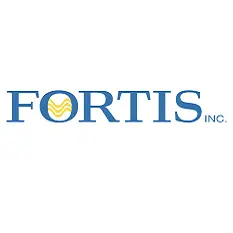
One of the safest industries to invest in in Canada is no doubt the regulated utility industry. And if you’re looking for the best of the best, Fortis (TSE:FTS) is certainly up there.
Fortis primarily generates its earnings through its regulated utility businesses. These include electricity and natural gas transmission and distribution.
Because these operations are regulated by government authorities, Fortis can set rates that provide a stable and predictable return on investment. This model provides the company with steady, low-risk income.
For this reason, it’s not really that surprising that the two companies that have achieved Dividend King status, meaning they’ve raised their dividends for 50+ consecutive years, are both regulated utilities. Fortis being one of them, and Canadian Utilities being the other.
Utilities are able to grow their earnings primarily through expanding their rate base, which in a nutshell is the overall value of the utilities assets that allow them to earn a rate of return.
As a result, Fortis tends to make significant capital investments back into the business in an attempt to grow this rate base. A prime example of this would be their $25B+ capital investment plan over the next half-decade.
The stock has a beta of 0.26, highlighting the low-volatility nature of Fortis. This means that, on average, if the TSX loses 1%, Fortis will only lose 0.26%. Beta is far from guaranteed on a daily basis, so the results are typically averaged out over a longer period of time to give some sort of indication of volatility.
Overall, with 99%+ of the company’s earnings coming from regulated utilities, there has been virtually no surprises when it comes to Fortis and its results.
Loblaw (TSE:L)
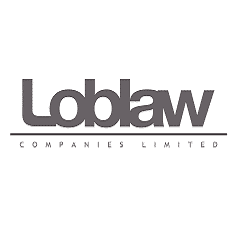
There are very few companies in Canada with the economic moat that Loblaw (TSE:L) has. Canadian consumers are, on average, only 9km away from a Loblaw store.
The company operates various grocery store banners, including Loblaws, No Frills and Real Canadian Superstore.
The company has posted outstanding returns over the last half-decade, outpacing both the TSX and S&P 500, due to what I believe is the strongest “discount” factor out of all the major grocers here in Canada.
The cost of living is skyrocketing in Canada, and as a result, many consumers are becoming actively aware of what they’re spending on groceries. Because of the company’s accessibility and discount-type stores, foot traffic into the stores is increasing.
The company has consistently reported double-digit earnings growth and is deploying capital back into the business at a record pace in order to expand its operations and make it more appealing to Canadian consumers.
In addition to this, the company’s beta of 0.22 makes it one of the lowest beta stocks on the Toronto Stock Exchange.
This is primarily due to the consistency and reliability of the company’s earnings. Despite numerous boycotts, bad PR, and other consumer issues, the company continues to accelerate its earnings and grow its customer base, highlighting the fact that now more than ever, Canadians are looking to cut down on their costs of living.
And with food being an essential need, it is difficult to see how the growth slows for Loblaw in the future.
Dollarama (TSE:DOL)
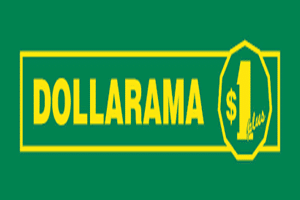
Doubling down on the idea that Canadian consumers are doing everything in their power to trim down costs of living, Dollarama (TSE:DOL) is the next stock on this list.
Because the company is currently in the midst of a growth phase, its beta does come in a little higher than the other stocks mentioned at 0.59. However, considering the company’s dominant share in the dollar-store market in Canada, it is a safer bet they continue to accelerate earnings growth rather than slow down.
Dollarama operates a value retail business, selling a wide range of products at low price points, typically ranging from $1 to $5 CAD. The company’s product categories include consumables (food, snacks, cleaning products), general merchandise (household items, toys, stationery), and seasonal items (holiday decorations, gardening supplies).
The company operates on the premise of high inventory turnover. Margins are smaller on items, but because the items are so cheap, it runs virtually no risk that inventory will become outdated and they’ll have to mark it down and ultimately reduce margins.
The company’s fixed pricing points also make it a much easier experience for consumers and also pricing management.
The company isn’t afraid to tap into smaller population markets either, with a plethora of stores located in small towns. The fact it doesn’t need to rely on a large population to open up a profitable store gives it ample flexibility and ultimately a wide runway in terms of expansion.
Thomson Reuters (TSE:TRI)
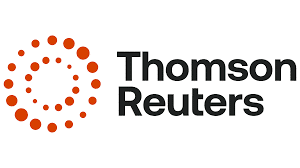
Thomson Reuters (TSE:TRI) is a conglomerate here in Canada, resulting primarily from the merger of Canada’s Thompson and United Kingdom’s Reuters group in 2008.
Thomson Reuters’ three largest segments are its legal professionals, Tax and accounting, and corporates segments. Legal professionals is about 42% of the firm’s revenue and 47% of the firm’s adjusted EBITDA.
Tax and accounting makes up about 20%-25% of the firm’s revenue and EBITDA.
Corporates, which consists of legal professionals and tax and accounting products sold to corporations, also makes up about 20%-25% of the firm’s revenue and EBITDA.
A large chunk of the company’s revenue comes from subscription-based services. This is a more predictable form of cash flow than one-off sales, and as a result earnings tend to be consistent. In general, fewer surprises on a revenue and earnings front tends to lead to lower volatility in terms of share price.
The company has operations in over 100 countries, making its geographic footprint exceptionally diverse. This allows it it to weather the storm in terms of economic downturns in any particularly country more efficiently.
The company has a beta of 0.43, and in addition to this boasts exceptional returns over the short,mid, and long-term, outperforming both the S&P 500 and the Toronto Stock Exchange.
Great-West Lifeco (TSE:GWO)
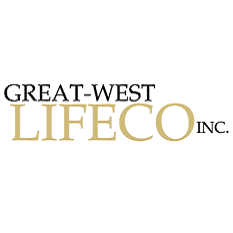
Great-West Lifeco (TSE:GWO) is one of the largest life insurance companies in Canada and has a significant presence in the United States, Europe, and other international markets.
There are a multitude of different types of insurers here in Canada, ranging from asset managers to property and casualty insurers to life insurers. Great-West primarily focuses on the life insurance and asset management end of things.
The company has operations globally, but primarily operates in Canada, the United States, Europe, and Asia markets.
The Canadian business contributes approximately 31% of adjusted earnings and has leading market positions in group insurance, group retirement, and individual insurance.
The company operates the second-largest recordkeeping business under the Empower brand in the United States, with an earnings contribution from the country approximating 26%. Great-West Lifeco also offers various products across Europe markets with a strong presence in the UK, Ireland, and Germany.
The Europe segment contributed around 21% of adjusted earnings and the reinsurance business accounts for around 22% of adjusted earnings.
The company’s overall product diversity, ranging from life, disability, healthcare insurance, wealth management, retirement planning and so much more allow it to cater to a wide variety of customers, all at different stages of their life.
The company is one of the higher-volatility stocks on this list, with a beta of 0.85. However, it has historically still offered lower volatility than the markets in general, and has also been one of the better dividend stocks in Canada over the last decade.
Its returns over the last half-decade due to higher interest rates have been amplified as well, as these types of insurers generally benefit from higher rates due to the bulk of their premiums being invested in low-volatility fixed-income assets.
Overall, although a “safe” stock does not exist, these options have historically led to lower volatility
The definition of “safe” is entirely dependent on the individual, which made this article a bit difficult to construct. However, if the above stocks suite your overall risk tolerance and time horizon, they’re a great place to start.
If one is super-keen on the aspect of “safe”, it is possible fixed-income investments may be more suitable for you. Again, that is all up to the individual.
